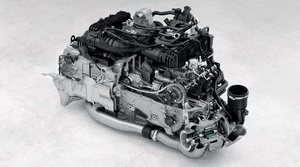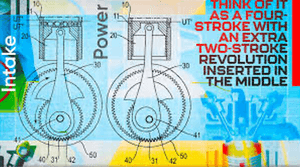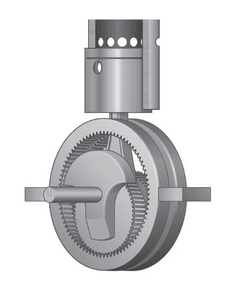The Engine That Breaks All the Rules
CAN YOU BELIEVE THIS? A SIX-STROKE ENGINE IS HERE
We’ve had two-stroke and four-stroke engines for over a century—but now, a wild new concept has entered the chat: the six-stroke engine. And no, it’s not science fiction. To say this engine is “unusual” is putting it lightly. This is combustion engineering turned on its head—and it might just be brilliant.
A QUICK REFRESHER ON FOUR-STROKES
If you’re reading this, chances are you know the basics. The modern four-stroke engine (suck-squish-bang-blow) was perfected in 1876 by Otto and Langen. It uses four strokes per combustion cycle: intake, compression, combustion, and exhaust. It’s efficient, reliable, and the foundation of nearly every engine on the road. So why change it?
ENTER THE SIX-STROKE: BEST OF BOTH WORLDS?
On September 12, 2024, Porsche and Romania’s Technical University of Cluj-Napoca were granted U.S. Patent No. US 2024/0301817 A1 for an engine design they call:
“A Combustion Machine with Two Times Three Strokes.”
Sounds complicated? It is.
In plain terms, it looks like a traditional piston engine—but it performs two power strokes for every three revolutions of the crankshaft. This is thanks to a radical crankshaft geometry and some clever port engineering.
Here’s how it works:
- Think of it as a four-stroke engine… with a two-stroke cycle squeezed in.
- The crankshaft design allows for a second power stroke before the next intake/exhaust cycle.
- Scavenging ports let in fresh air while pushing out exhaust—think turbocharged lung power.
WHAT DOES A SIX-STROKE ENGINE SOUND LIKE?
Picture this: a single-cylinder engine thumping out a strange new rhythm. A kind of mechanical waltz:
One, TWO, THREE… One, TWO, THREE…
The patent even recommends using a cylinder count that’s a multiple of three to balance the firing pulses. Inline-6? V6? W12? Horizontally opposed? All fair game.
The result: a smoother, more rhythmic engine with an intake/exhaust sound that’s part opera, part industrial techno.
THE “ECCENTRIC” HEART OF THE MACHINE
This engine lives and dies by its wild crankshaft. Instead of connecting rods attaching directly to the crank, they bolt to an offset “big end” trapped between two planet gears. These gears rotate within annular gears (annuli) that shift the piston’s dead-center points during its cycles.
That’s right—your piston moves in a funky flower-patterned path, thanks to a mechanism straight out of a Spirograph.
Oh, and there’s a variable-compression system too. By rotating the annulus, the engine changes its compression ratio on the fly, adjusting to demand and efficiency needs. Wild.
POTENTIAL BENEFITS
- More Power Strokes = More power (maybe)
- Smoother Operation = Think V12 smoothness from an inline-six
- Compact Range Extenders = Ideal for hybrids or specialized engines
BUT IT’S NOT ALL RAINBOWS AND BOOST PRESSURE
Here’s where the rubber meets the road—and maybe slips a little:
- Friction Frenzy:
More moving parts = more places to wear out and leak oil. - RPM Limitations:
More valve cycles mean more heat and inertia, possibly limiting redline potential. - Emissions Headaches:
Scavenging means more unburned fuel/air sneaking into the exhaust. You’ll need clever catalytic converters. - Size & Packaging:
Squeezing all this geartrain wizardry into an engine bay? Good luck. - Manufacturing Costs:
Casting and assembling this crankshaft is like building a Swiss watch… with a blowtorch.
FINAL THOUGHTS: A MECHANICAL MOONSHOT
Is the six-stroke engine the future? Maybe. It’s bold, weird, and might be over-engineered—but it’s the kind of mad-science innovation that keeps the car world spinning.
So the next time someone tells you internal combustion is dead, tell them Porsche and a Romanian university just added two more strokes to the game.
Source: Motortrend





